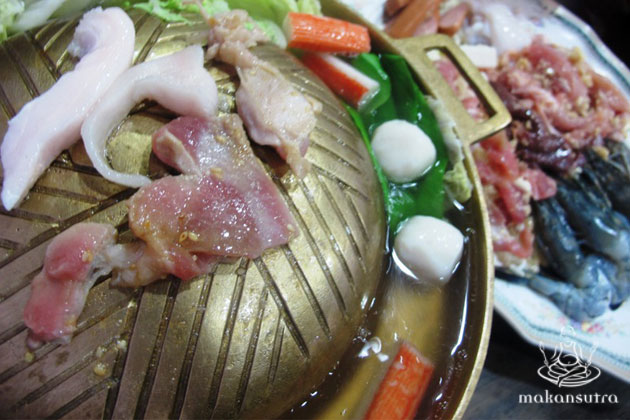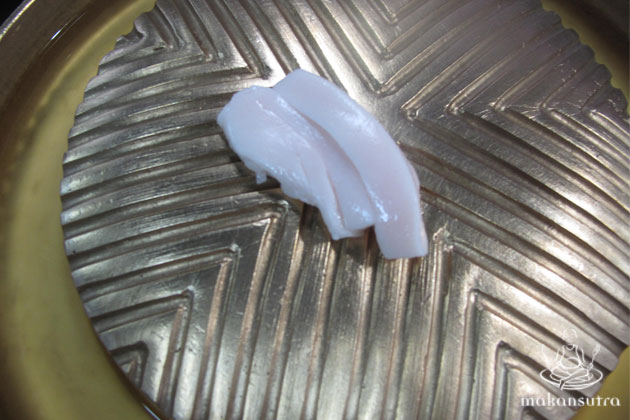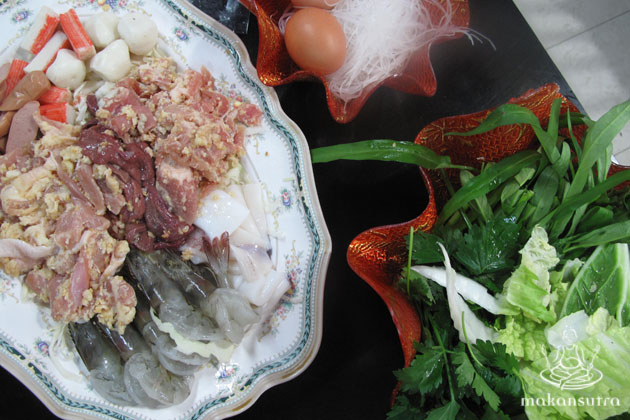
New Udon: Is Mookata Korean inspired?
By Thammika Songkaeo - Thursday, Aug 28, 2014
Mookata! Mookata! Many clued-in Singaporeans talk about and tear into it as a late-night casual meal with friends. The grilling of the meats, the smoke, the smell, the sizzle, the boiling of the vegetables, the dipping into the sauces, and the comforting little chomps of the steaming hot ingredients make Mookata one of the more fun eats in Singapore. It’s given the once-popular Mala hotpot sensations a boot off the makan-love charts. We love it, but do we actually know what its story is?
“Mookata” is Thai. “Moo” means “pig” or “park”, and “kata” means “pan” or “skillet” in Thai. The Thais, however, will say that it’s Korean. There are some stories that the dish came from the desperation and creativity of Korean soldiers when Korea was being divided into North and South. Soldiers found raw dog meat and cooked that on their heated steel helmets. Another story, much less romantic but perhaps more likely, is simply that the Thais saw how popular and delicious Korean barbecues were, and they thought, “Hey! Why not grill and eat as a meaningful social activity in Thailand?” Taking things a step further, the marketers of the soon-to-be Mookata smartened up and combined the grill with a moat. Thais LOVE their sukiyaki, a social soupy hotpot dining experience. But this is one up: you can both grill and boil your meats and vegetables at a Mookata place.

Mookata became a hit in Thailand almost ten years ago. The Thai Mookata places were often buffets, some at the low price of two or three Singapore dollars. With such a low cost naturally came controversial news about dirty and suspicious meats. Alas, some were true. News anchormen would shake their heads in dismay reading about the critters crawling on the meats.

Mookata businesses slowly died out partially as a result of hygiene-related customer doubts. They still exist, but without the excitement once represented by long queues.
So with no one really talking about Mookata in Thailand with so much hype anymore, it was surprising to see the Mookata rage in Singapore. From Katong, to Bugis, to Golden Mile, Mookata places can be seen in all sizes and forms. They come with cute pink pig mascots or nothing at all – just pure, raw, and dark spaces, such as with New Udon in the Golden Mile Complex, where we were (going straight to the “Thai HQ” source here).
But it was clear once we entered that the place didn’t cater to only Thais. The waitress began spewing in Chinese whether we wanted liver in our set, too. All the food comes in sets ($45 being the smallest set, which is enough to feed three). They look at how many people are in your party and give you the amount of food accordingly. Your only real option seems only to be what to drink and liver or no liver.

“What about the menu?” You might then ask. Is it “real” Thai Mookata? That’s a difficult question. Even the Mookata in Thailand varies. New Udon didn’t serve carrots, but some Mookata places in Thailand do. New Udon didn’t have ham, and some in the Land of Smiles do. Many places in Thailand also don’t have just Mookata and allow you to have side dishes of clams, papaya salad, and whatnot. New Udon doesn’t do that, but we understand that in Singapore, Mookata places are… just that.
So that’s the murky history of Mookata! You can now begin your next Mookata meal with friends with the question, “Where do you think this food comes from?” and see if anyone guesses, “Inspiration from a soldier’s hunger and helmet”. And as long as you have your meat, veggies, grill, and moat, your Mookata is just about as authentic as the Thai ones get. Now eat up, food soldier!
New Udon Mookata
#01-55 in Golden Mile Complex (5001 Beach Road)
10 a.m. to 6 a.m. (next day) Daily


